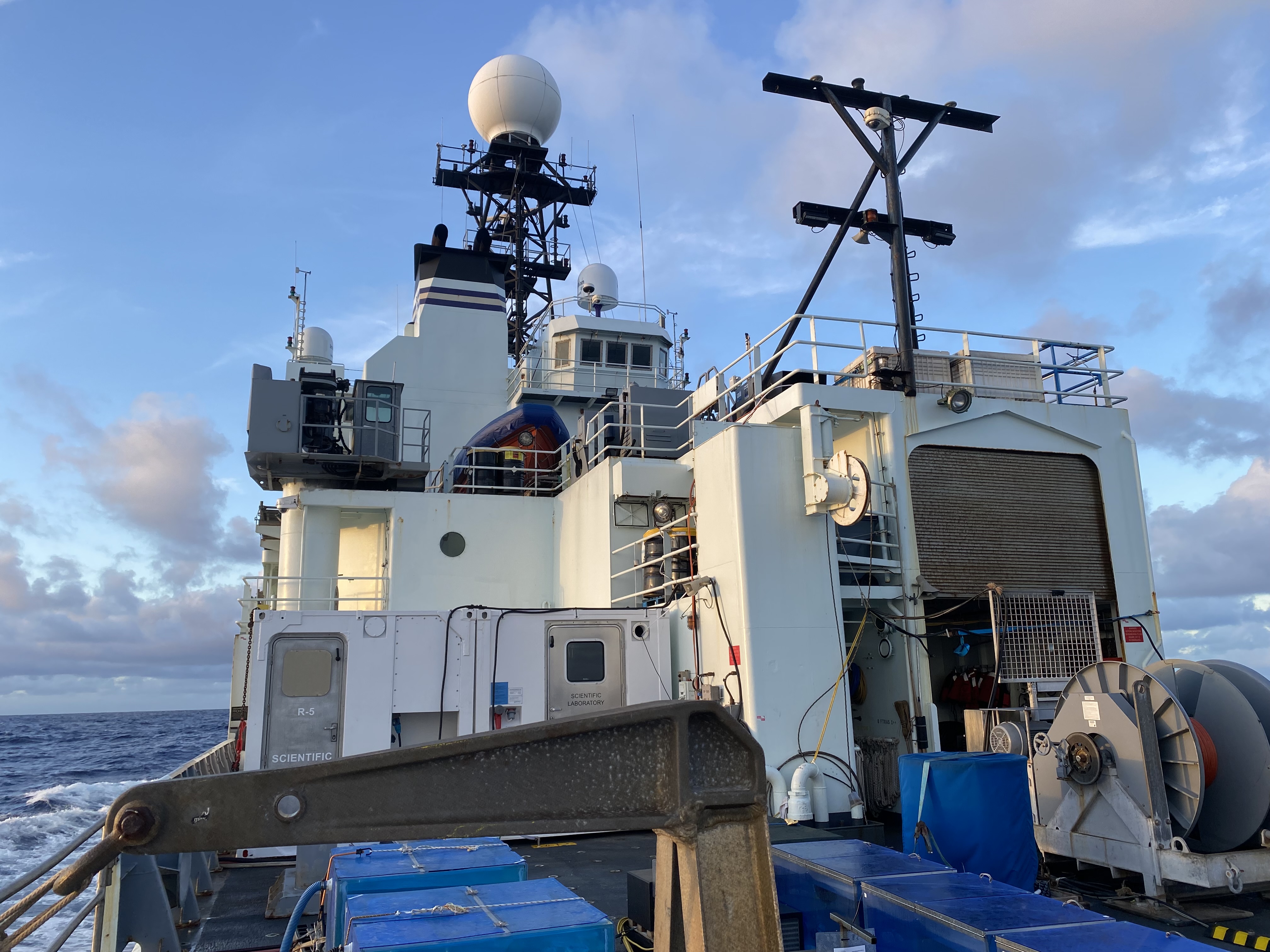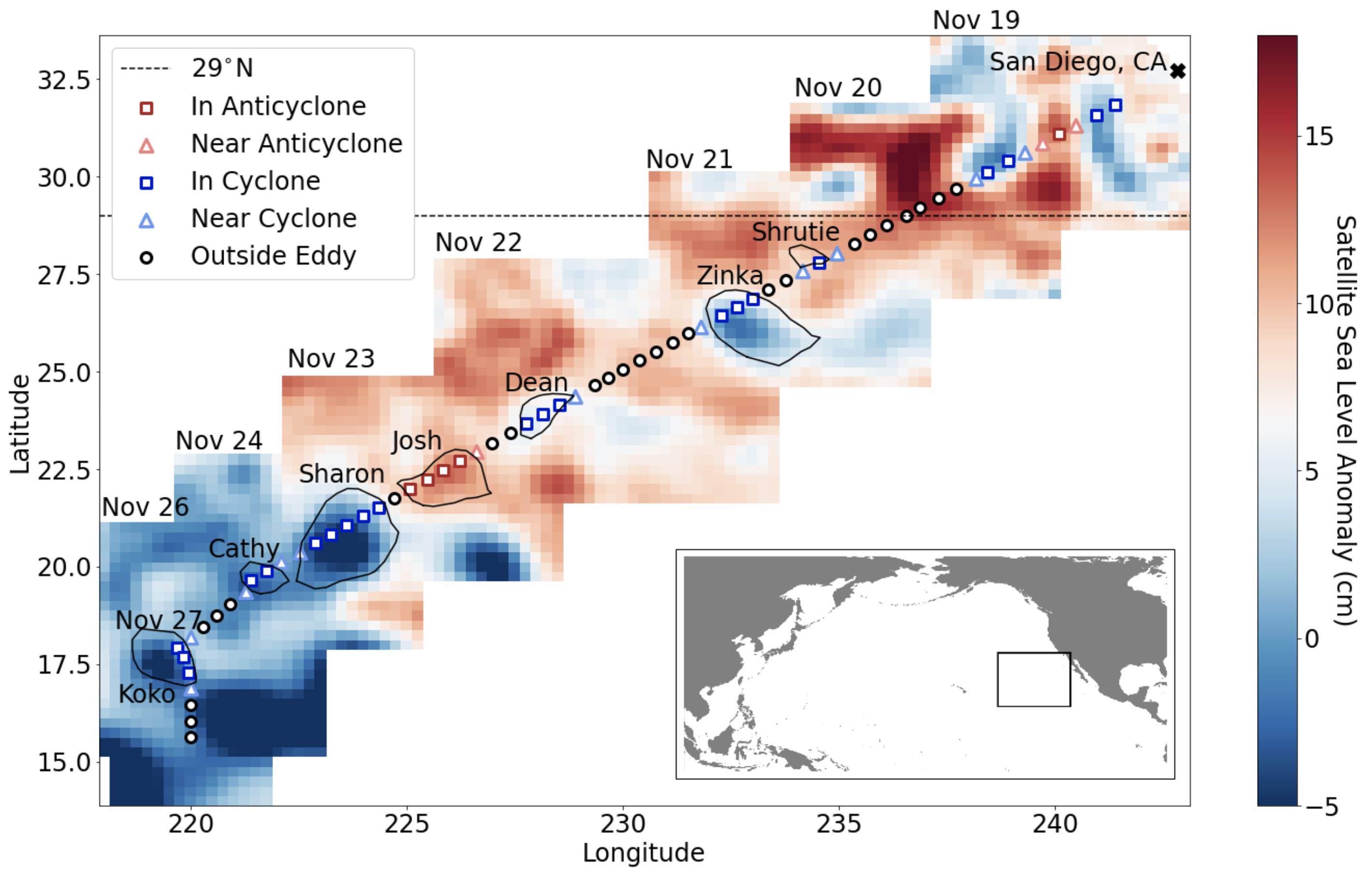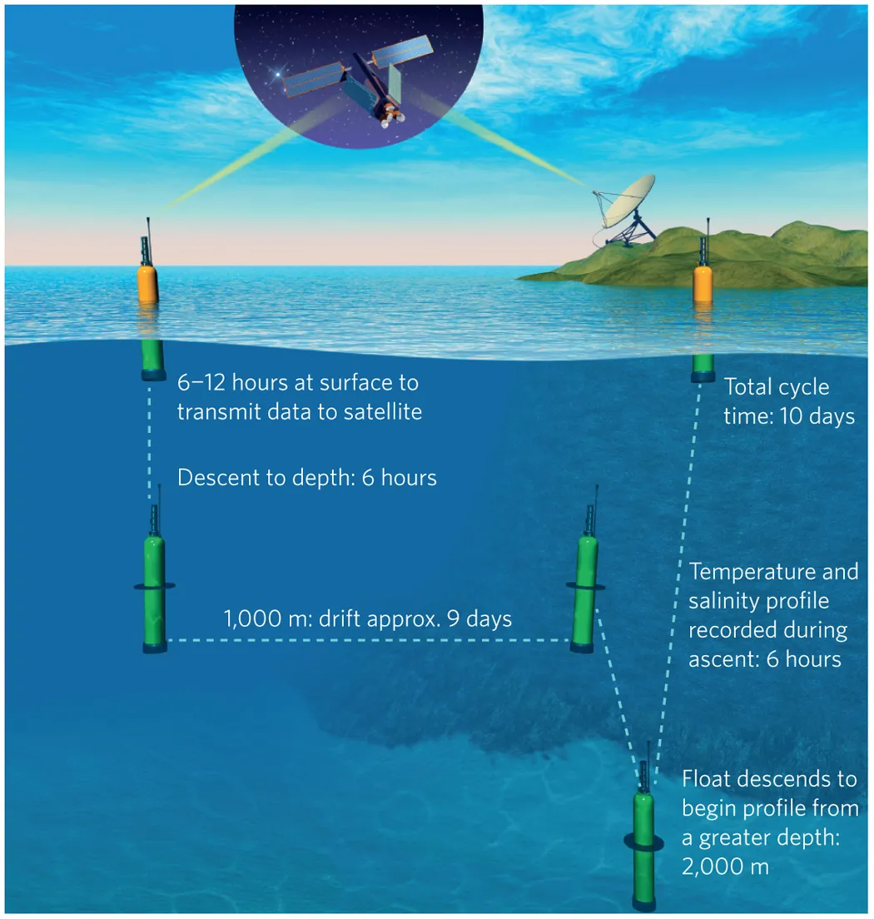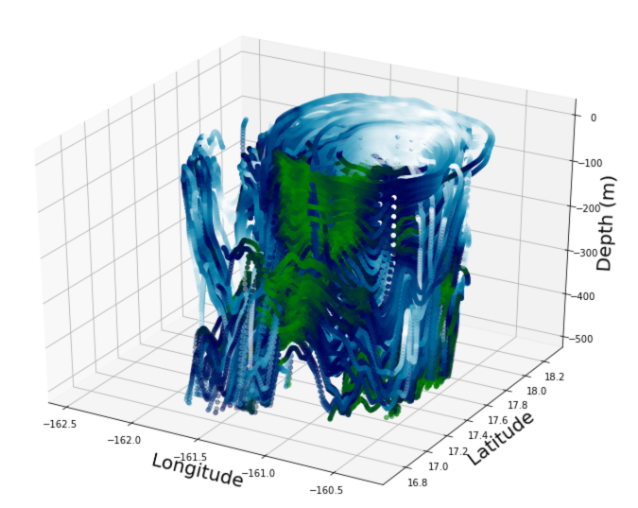Research Projects
Impacts of Eddy Coherency on Chlorophyll-a Concentration
In this satellite remote sensing project, we used a Lagrangian perspective to re-examine the idealized assumption that mesoscale eddies are laterally coherent, or strictly trapping. Counter to expectations, we found only half of eddies in the North Pacific are strictly Lagrangian coherent at any given time, and their trapping strengths evolve over their lifetimes. This effects the concentration of phytoplankton observed in eddies, where trapping locally elevates patches of chlorophyll concentration more so than their leaky counterparts. Nevertheless, leaky eddies also alter chlorophyll concentrations and their contribution to primary productivity may be underestimated because these biological responses are not preserved for long timescales.Publications:
- Jones-Kellett AE & Follows MJ (2024). A Lagrangian Coherent Eddy Atlas for Biogeochemical Applications in the North Pacific Subtropical Gyre. Earth System Science Data, 16, 1475-1501. doi.org/10.5194/essd-16-1475-2024
- Jones-Kellett AE & Follows MJ. The satellite chlorophyll signature of Lagrangian eddy trapping varies regionally and seasonally within a subtropical gyre. Ocean Science, Highlight Article (in press). doi.org/10.5194/egusphere-2024-3211
- North Pacific Subtropical Gyre RCLV Atlas (Version 2). Dataset product from Ocean Science manuscript. Available on Zenodo or Simon's CMAP.
- North Pacific Subtropical Gyre RCLV Atlas (Version 1). Dataset product from Earth System Science Data manuscript. Available on Zenodo or Simon's CMAP.
- RCLVAtlas. Software available on Zenodo or GitHub.
- RCLV_chl. Code for Ocean Science analysis and manuscript figure generation. GitHub.

Variability in Phytoplankton Community Composition at the Mesoscale


Publications:
- Jones-Kellett AE, McNichol JC, Raut Y, Cain KR, Ribalet F, Armbrust EV, Follows MJ, Fuhrman JA (2024). Amplicon sequencing with internal standards yields accurate picocyanobacteria cell abundances as validated with flow cytometry. ISME Communications, 4(1): ycae115. doi.org/10.1093/ismeco/ycae115
- Jones-Kellett AE, McNichol JC, Raut Y, Fuhrman JA, Follows MJ (submitted). Eukaryotic phytoplankton are sustained by eddies and lateral mixing in a subtropical gyre.
- Graff van Creveld S, Coesel SN, Lavoie E, Iverson V, Morales R, Schatz M, Jones-Kellett AE, McNichol JC, Key R, Fuhrman JA, Durham BP, Armbrust EV (submitted). Induced pathogenicity toward open-ocean diatoms by a newly isolated filterable bacterium Ekhidna algicida sp. nov. doi.org/10.1101/2025.09.24.678341
- Universal Amplicon Sequences (mixed 16S/18S) from SCOPE Gradients 4 Cruise. NCBI BioProject Dataset.
- internal_standard_correction. Code for ISME Communications manuscript. GitHub.
Biogeochemical Argo Floats in the Lofoten Basin Eddy
Argo floats equipped with biogeochemical sensors (BGC-Argo) continuously take measurements of optical properties throughout the water column. While eddies are commonly studied from the surface by satellites, BGC-Argo provides unique insight into processes happening at depth. This project focuses on floats in and around the Lofoten Basin Eddy, a semi-permanent anticyclone located off of the coast of Norway. It is extremely rare to have multiple Argo profiles within a single mesoscale eddy. But, due to the stationary nature of the Lofoten Basin Eddy and a high density of floats in the region, there are enough observations to compare the seasonality of the biological carbon pump in the anticyclone compared to its surroundings. I started this project with a team of scientists during the BGC-Argo workshop in 2023, and several of us continued to work on it afterwards. We have a manuscript describing our findings under review, so stay tuned!Publications:
- Koestner D, Clayton S, Lerner P, Jones-Kellett AE, Walker SL. Biogeochemical-Argo floats reveal seasonality of the biological carbon pump influenced by the Lofoten Basin Eddy (2025). Geophysical Research Letters, 52(12): e2024GL111937. doi.org/10.1029/2024GL111937

MITgcm-Darwin Idealized Simulation
During my postdoc at MIT, I am running an idealized numerical model simulation of the North Pacific Ocean at 1/10 degree spatial resolution. This is computationally expensive, but will allow us to study the evolution of phytoplankton communities in mesoscale features such as eddies. While autonomous vehicles are making huge strides in observing the vertical water column, model simulations are advantageous in giving a more holistic picture of phenomena at fine-scales. I am using the MIT general circulation model (MITgcm) to simulate the ocean physics, and the Darwin Model to simulate a planktonic ecosystem with multiple functional types, including bacteria, phytoplankton, and zooplankton.
Page last updated: May 07, 2025
